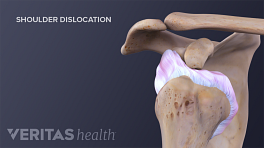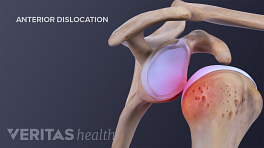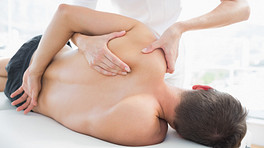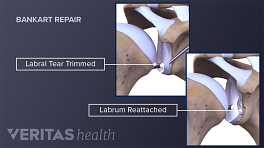About 2 weeks after surgery for shoulder instability, patients can begin more extensive stretching exercises through a physical therapy program. Initially, therapy will focus on gentle motions to increase range of motion and flexibility. After about 6 weeks, more resistance exercises will be added to strengthen the joint and its surrounding muscles.
In This Article:
- Surgery for a Dislocated Shoulder: What to Expect
- Recovering from Shoulder Dislocation Surgery
- Physical Therapy and Recovery Timeline After Shoulder Dislocation Surgery
Movement Restrictions
In order to give the shoulder time to heal, patients will have movement restrictions for the first 3 or 4 weeks after surgery. Restrictions include not moving the shoulder or arm:
- Above the head
- Across the body
- In the opposite direction as the surgical site. For most people, who will have repairs on the anterior (front) of the shoulder, this means no moving the arm or rotating the shoulder toward the back of the body.
The Pendulum Exercise
A common range-of-motion exercise that is recommended shortly after shoulder dislocation surgery is the pendulum exercise. To perform this exercise, patients can do the following:
- Remove the arm sling and stand beside a table
- Lean forward and rest the hand of the non-affected shoulder on the table.
- Allow the affected arm to straighten and dangle freely.
- Gently swing the affected arm forward, backward, and in a circle for 2 to 3 minutes.
This exercise can be done several times a day within the first 2 weeks following surgery. The posture of the pendulum exercise—leaning forward and allowing the arm to dangle—can also be a safe and useful way for patients to change clothing or wash under their affected arm following surgery.
Recovery Milestones
After 6 weeks of therapy and rehabilitation, the affected arm can typically be used fairly normally, with the exception of avoiding forceful movements above the head or across the body, and weight-bearing activities, such as heavy lifting or push-ups.
Resuming work
Those who have a sedentary office job can usually return to work 1 to 2 weeks after surgery. Light-duty manual labor work can resume after 3 or 4 weeks, but full duty may need to wait 3 to 6 months, depending on the patient’s specific job and rehabilitation plan.
Returning to driving
Driving can resume once the affected arm is no longer in a sling and the shoulder muscles have recovered, ideally after 4 to 6 weeks.
Participating in sports
Individuals who play sports should consult their physician about clearance to return to play. Activities such as golf or swimming may be approved after about 6 weeks, but high-impact sports that can affect the shoulder, such as football or volleyball, will require several months of rehabilitation before individuals can resume playing.
Full recovery for shoulder strength and activity may take up to a year, but most patients who follow their rehabilitation plan and protect the shoulder can anticipate a full return to pre-injury activity.











